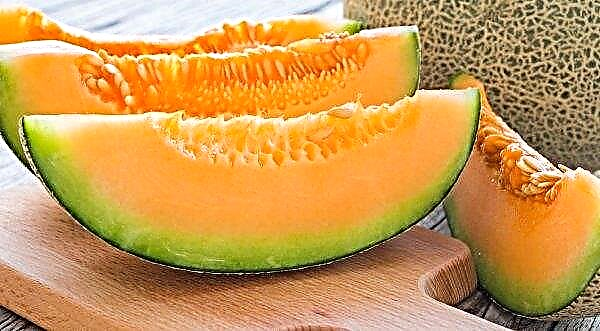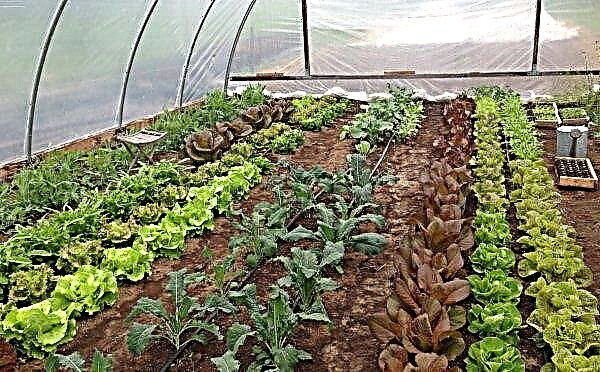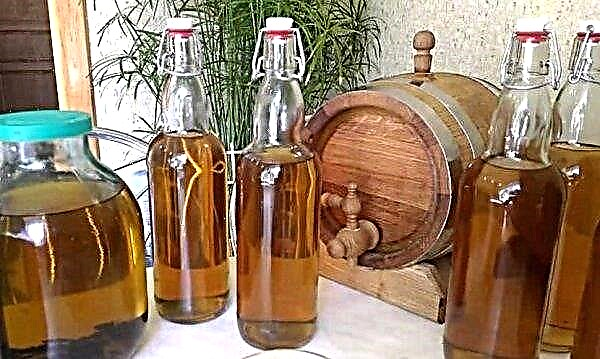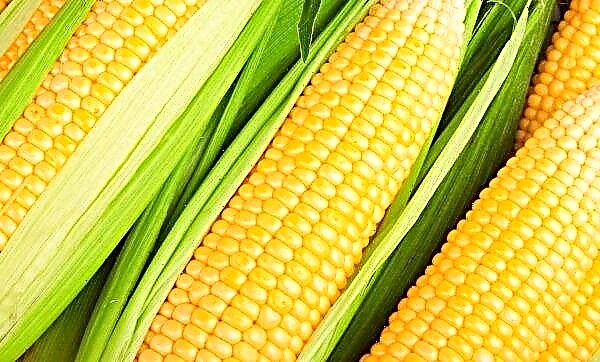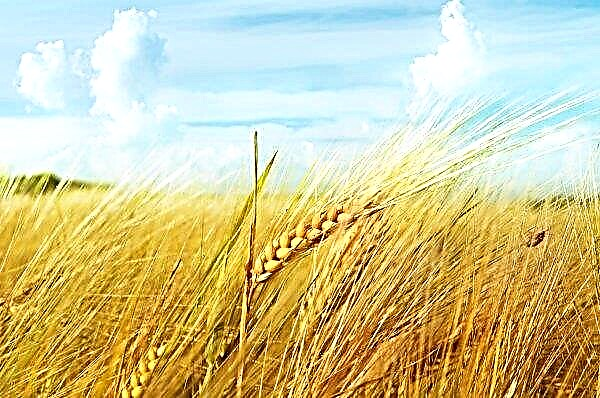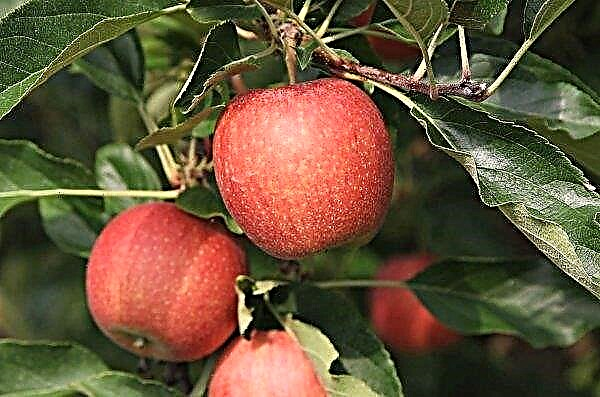Forget-me-not forest or Forest forget-me-not a representative of the flower kingdom, which feels great in the wild and in the garden. This plant as one of the decor elements is widely used by specialists in the field of landscape design. In addition, “forgetminot” has a number of healing properties and is used as a component in various medicinal decoctions.
Botanical description of the plant
Description of forest forget-me-not:
- size - height up to 0.4 m;
- family - borax;
- basal leaves are oval, growing on a stem with villi, oblong elongated;
- stem - sprawling and branched, bright green hue;
- flower - diameter from 1 to 1.3 cm, collected in inflorescences from 3 to 5 pieces, light blue;
- fruit - in the form of a sharp nut of a black shade, size - up to 2 mm;
- plant life - from 2 to 3 years;
- flowering - from late May to late June;
- soil - moist, light;
- insolation - shadow, partial shade.
How forget-me-nots grow in the forest
In natural conditions of a forest or forest-steppe, forget-me-not is found where the soil is well moistened and there is a shady protection in the form of large trees on top.
The flower feels great in the territorial zone of the river or any other body of water, in the glades, where taller representatives of the flora create a shadow. The distribution area of forget-me-nots is quite wide. It is found in the forests of Europe, Asia, Australia and New Zealand.Did you know? This plant can stand in a vase with water for about 25-30 days after being cut off. Sometimes it even “throws out” new flowers.

Popular varieties of forest forget-me-nots
The genus of this plant includes over 60 species, of which about 30 are found on the territory of our country.
Let us dwell on the most common of them:
- Alpine. It has a height of 20 to 30 cm. The bush is short and dense, flowers from dark blue to light blue. It fades completely in the sun, grows only in the shade.

- Hybrid. Derived artificially. It has the shape of a ball, whose height is about 14–18 cm. The color of the flowers is bright azure or dark blue.

- Swamp. The height reaches 30 cm. A distinctive feature of the plant is its shoots, which are highly branched and give many additional roots if the stems lie on the surface of the soil. It blooms for a very long time - from late spring to early autumn. The flowers have a dark blue hue.

- Arranged flowering. Height - up to 35 cm, the shape of the bush is sprawling, it is characterized by abundant flowering. Flowers - bright blue.

- Chekanovsky. This representative of the Burachkov family is listed in the Red Book of Russia. Plant height - up to 20 cm, shoots are collected relatively to each other tightly. The flower is a light blue hue. It grows on rocky mountain landscapes of the northern regions of our country.

How to plant forest forget-me-nots
Planting this plant should be divided into several simple steps:
- Site selection.
- Preparation of soil and material for planting.
- Planting a flower.
Did you know? Scientifically, this plant is called Myosotis, which means “ears of mice” in Greek. Forget-me-not was called because of the leaves, which in most species are down and actually look like a mouse "auricles.
Seat selection
When choosing a site for planting forget-me-nots, one must remember that this flower loves moist soil and a stable shadow. If the place on which the bush will grow is closed from the light by sprawling trees, then the plant can bloom for up to 30 days.
Of course, forgetminot also grows in illuminated places, but its flowering will be limited to 15-20 days. This plant feels great in the wind and drafts, so it is not worth protecting it from the influence of the wind.

Soil and seed preparation
The soil in which forget-me-not will grow should be well-moistened and moderately fertilized. Despite the fact that the flower loves moisture, under the condition of severe bogging of the site, drainage should be done before planting, since an excess of water in the soil can lead to rotting of the root system.
The land into which the landing will take place must be fertile and light. Loamy or sandy soils are not suitable, the root in them will not be able to fully develop. Seeds before sowing are soaked in salt water (5 g per 200 ml of water). Those that go under water and do not float are suitable for planting.Important! It is not necessary to oversaturated the soil into which the planting will be carried out with mineral fertilizers. All the vitality will go into the leaves, besides the forget-me-not can "stray" from the seasonal rhythm of vegetation.

Sowing algorithm
Forget-me-nots should be planted in mid-autumn. The process itself involves several steps.
- Pour the soil mixture of sand and earth into the tank in a ratio of 1: 2, respectively.
- Sow the prepared seeds to the surface of the soil and cover with paper on top.
- After the appearance of sprouts (usually after 7–9 days), they should be planted at a distance of 3–6 cm from each other.
- Move the container with forget-me-nots into a cool room or greenhouse until spring.
- In mid-April, drop forget-me-not into the flower garden.

Forest forget-me-not care
This plant does not require particularly careful care. Just do not forget about systematic watering and top dressing. If there is little snow in the winter, you must close the flower bed with plastic wrap or agrofiber so that the flowers do not freeze. Also, if the bushes are very large, you can cut a small part of the stems so that the forget-me-not develops better.
Watering
It is necessary to water the plant often, but it is not recommended to be too zealous with moistening the soil. The best option: in the summer season - 1 or 2 times a week. Water should be directed under the root, without flooding the leaves and flowers.
Top dressing
The flower is fed with organic and mineral fertilizers. The first time beneficial substances are introduced two weeks after planting in open ground. Subsequently, the plants are fertilized at the beginning of spring - an organic mixture of compost and peat should be poured under the root in a ratio of 1: 1.
Forget-me-not diseases and pests
This flower is susceptible to diseases such as:
- rot (brown and gray);
- powdery mildew (real and false).
 They treat these diseases by removing the affected areas and treating the cut sites with fungicides (for example, Topsin-M), Bordeaux fluid.
They treat these diseases by removing the affected areas and treating the cut sites with fungicides (for example, Topsin-M), Bordeaux fluid.
The most common harmful insects parasitic on forget-me-nots:
- scoop;
- slugs;
- aphid.
Important! If the plant is completely affected by the disease or captured by pests, it is better to uproot and dispose of it so as not to infect other flowers.
If one of these parasites attacked the plant, it is necessary to immediately treat the bush with an insecticidal solution (Atrix, Volley, Cannoneer or Contador).

Composition and medicinal properties of forest forget-me-not
The chemical composition of forest forget-me-nots is currently not fully understood. According to the information that exists today, it contains:
- tannins;
- anthocyanins;
- saponins;
- linoleic acid;
- flavonoids;
- potassium.
 The plant is widely used in folk medicine. Its entire upper part (flowers, stems and leaves) is dried and used as an additive in a variety of decoctions.
The plant is widely used in folk medicine. Its entire upper part (flowers, stems and leaves) is dried and used as an additive in a variety of decoctions.
Forget-me-not is present as an additional component in infusions from:
- bronchitis and chronic cough;
- tuberculosis;
- Toothache
- bowel disease.
Forget-me-nots are recommended for women with gynecological problems and infertility. Forget-me-not will decorate any flower garden and favorably emphasize a small landscape composition. And after the plant "fulfills" its decorative functions, it can be used when brewing tea - to combat a long list of diseases.






